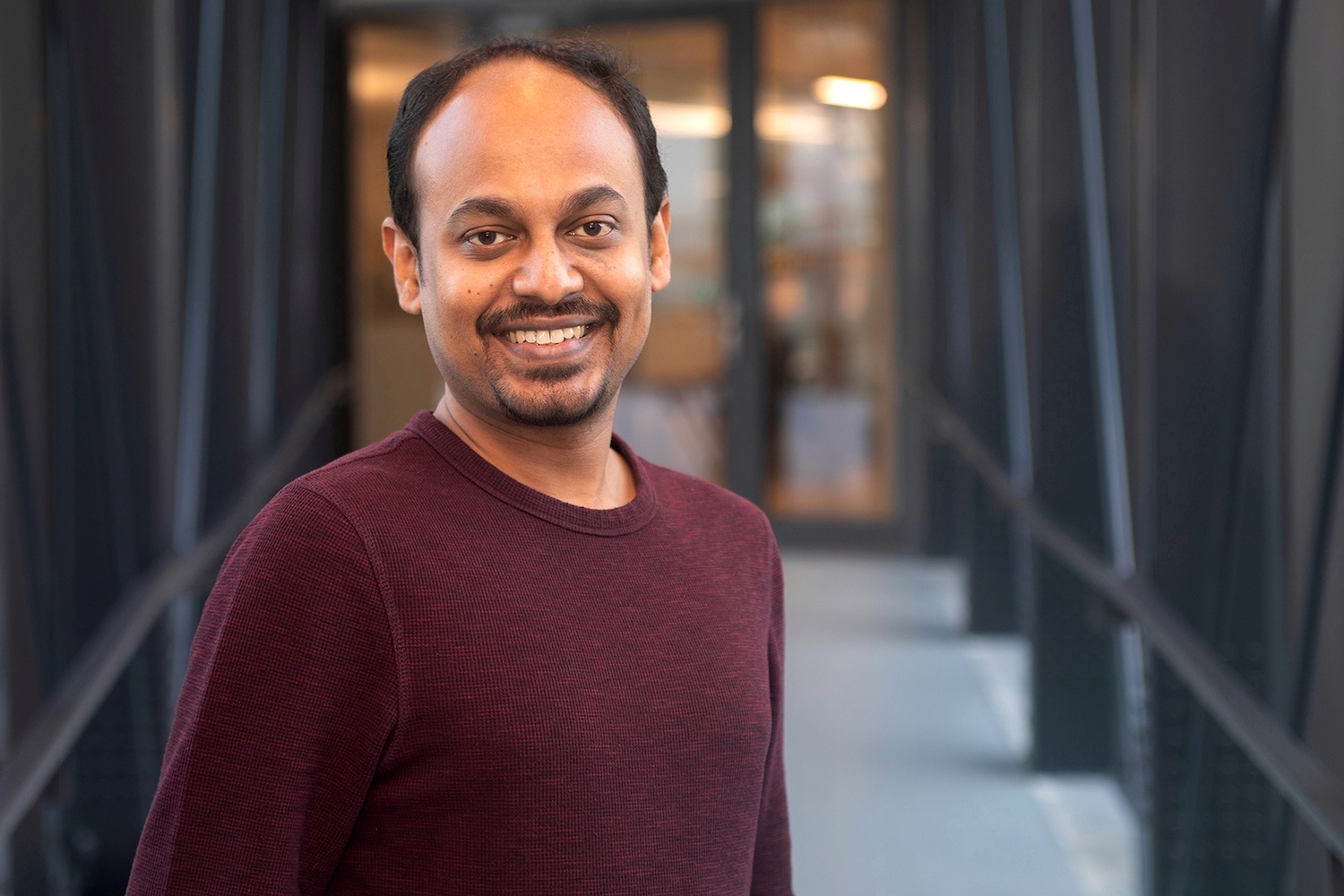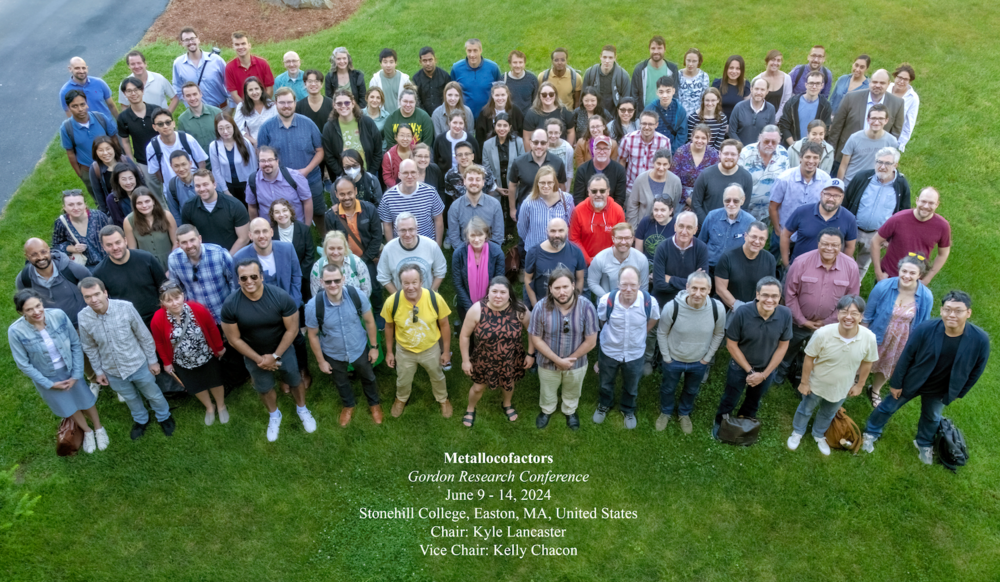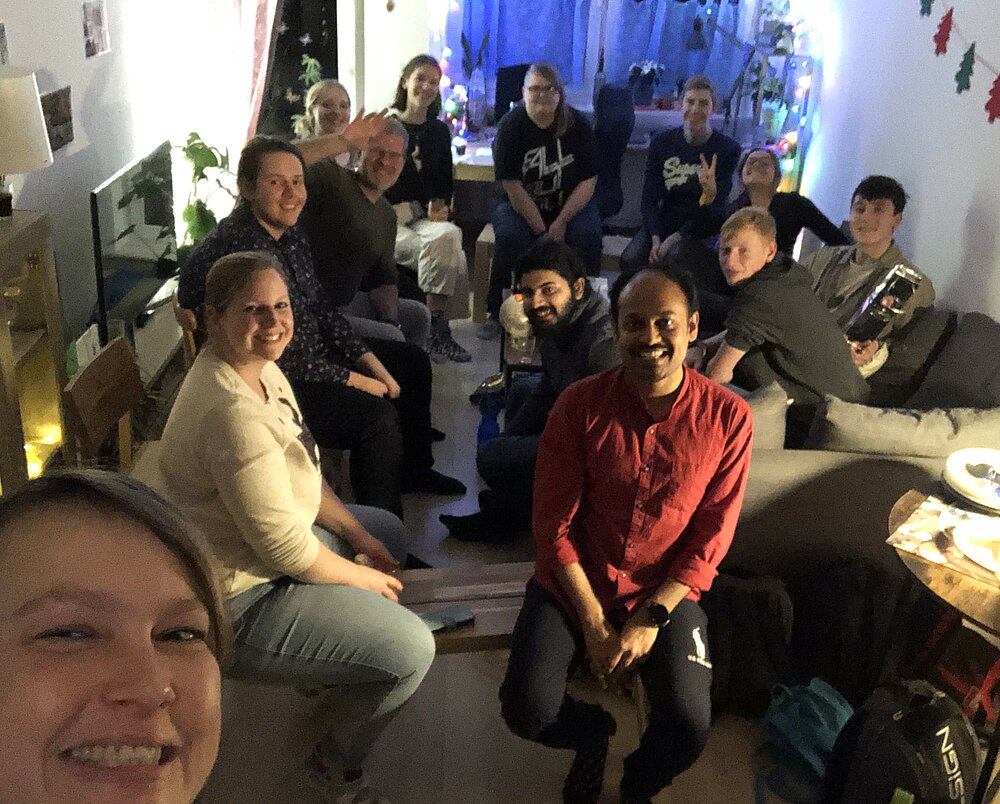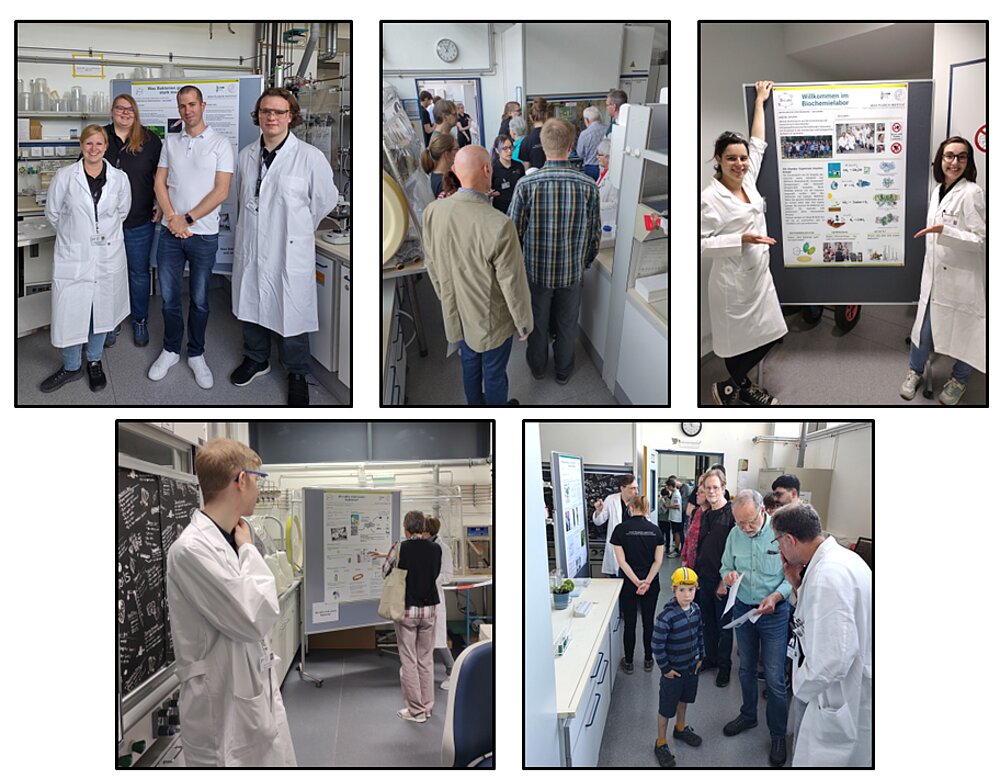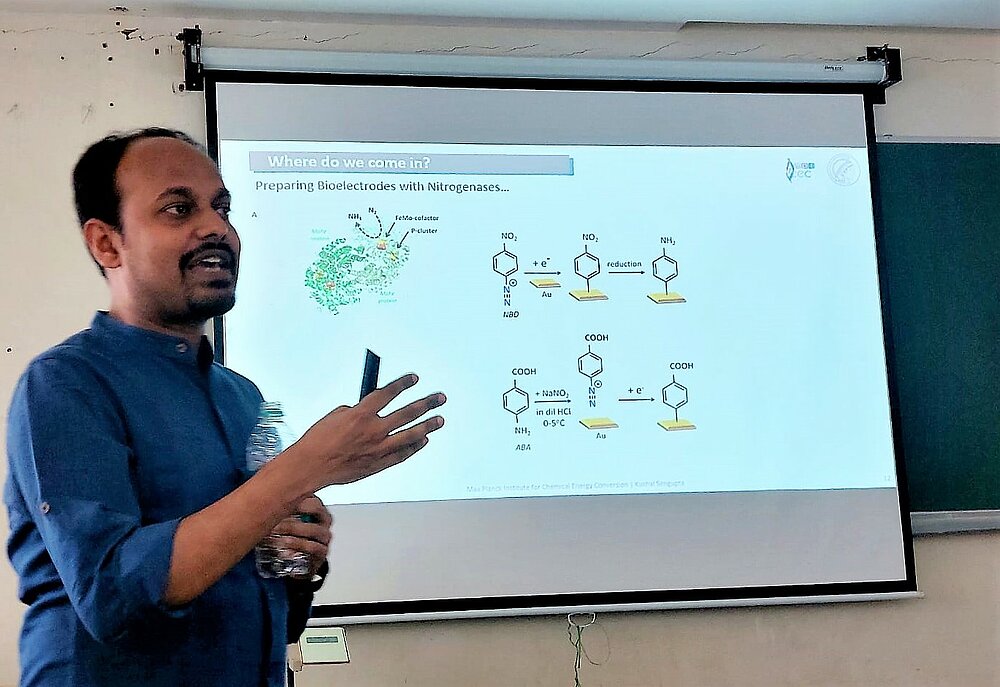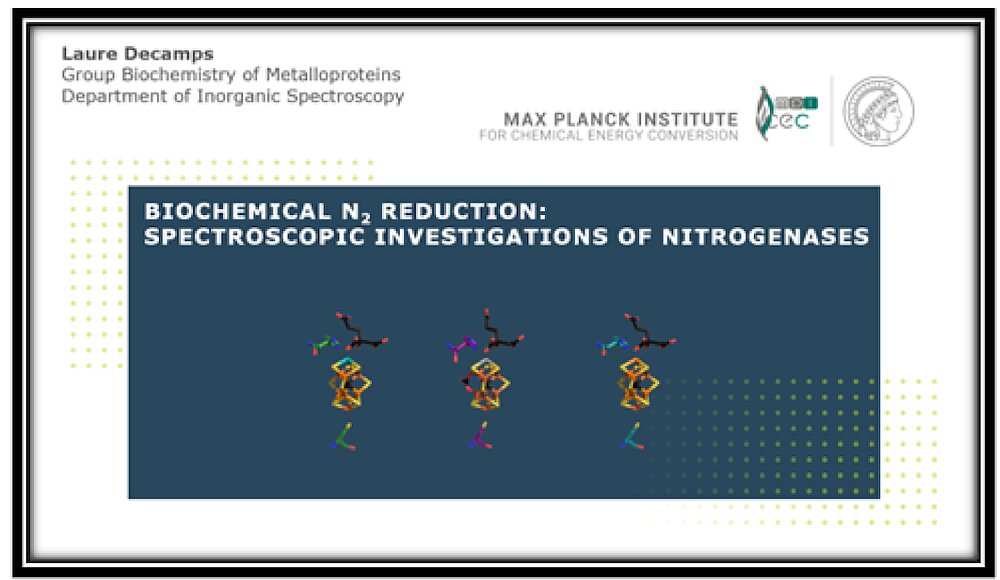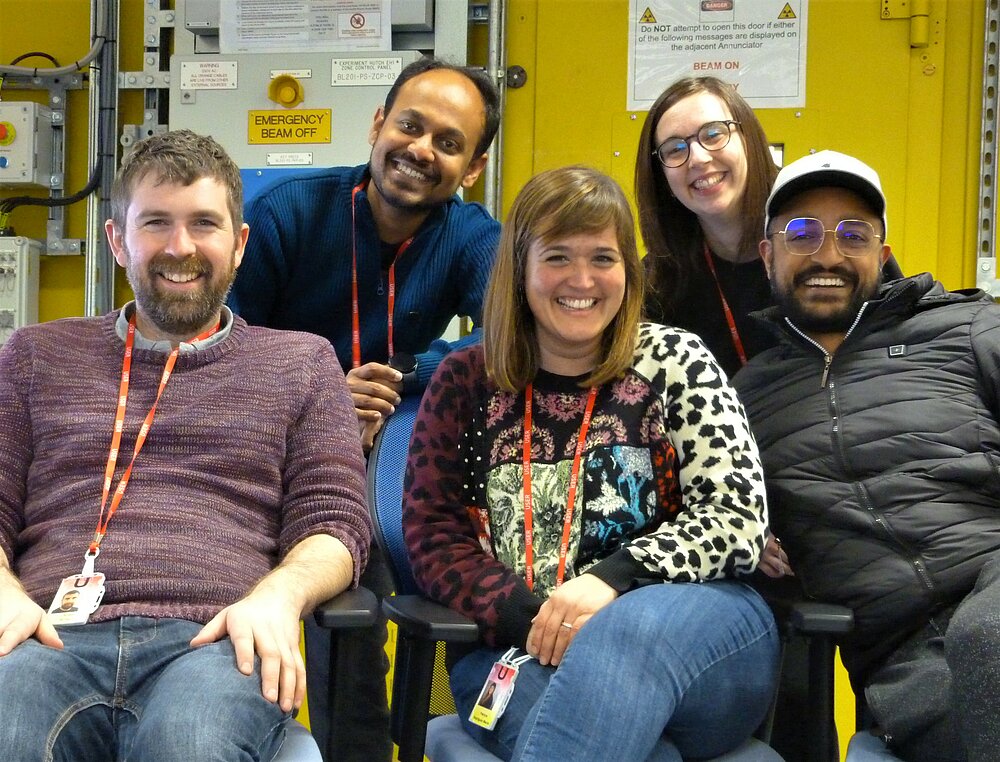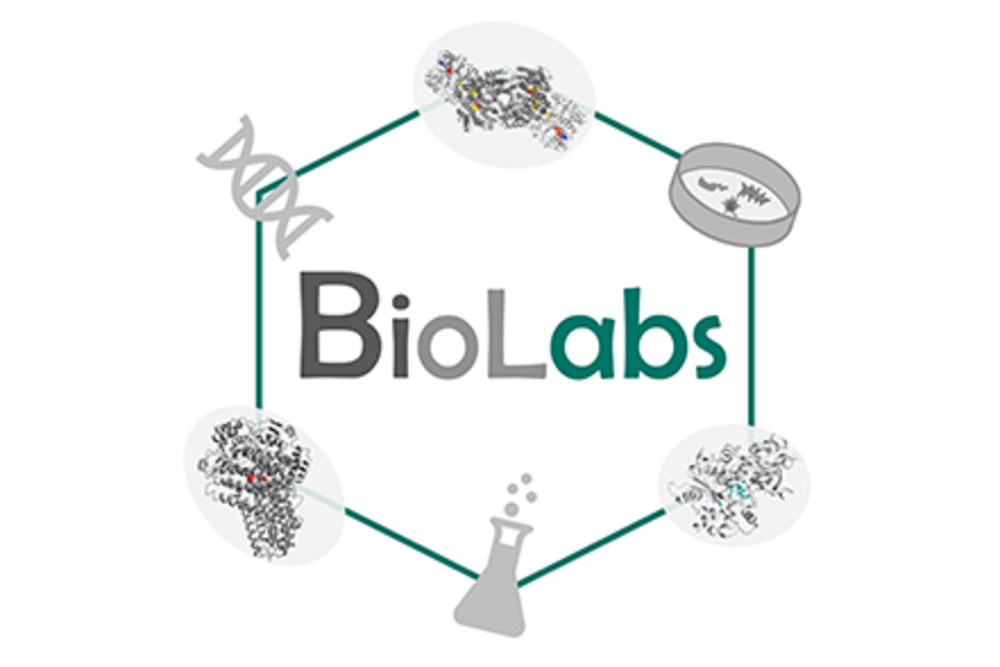Dr. Kushal Sengupta - Katalytische Mechanismen bei Metalloenzymen
- Dr. Kushal Sengupta
- Gruppenleiter
- Katalytische Mechanismen bei Metalloenzymen
- Anorganische Spektroskopie
- kushal.sengupta(at)cec.mpg.de
- Raum: 510
Vita
| B.Sc. | Jadavpur University, Kolkata, India (2008) |
| M.Sc. | Jadavpur University, Kolkata, India (2010) |
| Ph.D. | Indian Association for the Cultivation of Science, Kolkata, India (2016) |
| Postdoc | Cornell University, USA (2016-2019) |
| Assistant Professor (in Chemistry) | Abhedananda College under Burdwan University, India (Aug 2020 - March 2021) |
| Postdoc | MPI CEC (April 2021 - Oct 2022) |
| Group Leader | MPI CEC (since Nov 2022) |
Publications
Full publications list | Google Scholar
Selected publications
# - equal contribution
- Sengupta, K.*, Joyce, J. P., Decamps, L., Kang, L. Q., Björnsson, R., Rüdiger, O.*, DeBeer, S.* (2025). Investigating the Molybdenum Nitrogenase Mechanistic Cycle Using Spectroelectrochemistry. Journal of the American Chemical Society.https://pubs.acs.org/doi/full/10.1021/jacs.4c16047
- Chakraborty, U. K. #, Park, Y. #, Sengupta, K., Jung, W., Joshi, C. P., Francis, D. H., Chen, P.* (2024). A ‘through-DNA’mechanism for co-regulation of metal uptake and efflux. Nature Communications 15(1), 1-11. https://www.nature.com/articles/s41467-024-55017-z
- Wahl, I. M., Sengupta, K., van Gastel, M., Decamps, L., DeBeer, S.* (2024). Understanding the P-Cluster of Vanadium Nitrogenase: an EPR and XAS Study of the Holo vs. Apo Forms of the Enzyme. ChemBioChem. e202400833. https://chemistry-europe.onlinelibrary.wiley.com/doi/full/10.1002/cbic.202400833
- Ahmed, M. E., Chattopadhyay, S., Chatterjee, S. and Sengupta, K. (2022). Oxygen reduction reaction in enzymatic biofuel cells. Oxygen Reduction Reaction, Elsevier: 427-466. (Book chapter) https://www.sciencedirect.com/science/article/pii/B9780323885089000082
- Fu, B.#, Sengupta, K.#, Genova, L. A.#, Santiago, A. G., Jung, W., Krzemiński, Ł., Chakraborty, U. K., Zhang, W., Chen, P.* (2020). Metal-induced sensor mobilization turns on affinity to activate regulator for metal detoxification in live bacteria. Proceedings of the National Academy of Sciences 117(24), 13248-13255. https://www.pnas.org/doi/abs/10.1073/pnas.1919816117.
- Sengupta, K., Chatterjee, S. and Dey, A.* (2016). In Situ Mechanistic Investigation of O2 Reduction by Iron Porphyrin Electrocatalysts Using Surface-Enhanced Resonance Raman Spectroscopy Coupled to Rotating Disk Electrode (SERRS-RDE) Setup. ACS Catalysis 6(10), 6838-6852. https://pubs.acs.org/doi/full/10.1021/acscatal.6b01122
- Sengupta, K., Chatterjee, S., Samanta, S., Bandyopadhyay, S., Dey, A.* (2013). Resonance Raman and electrocatalytic behavior of thiolate and imidazole bound iron porphyrin complexes on self-assembled monolayers: Functional modeling of cytochrome P450. Inorganic chemistry 52(4), 2000-2014. https://pubs.acs.org/doi/full/10.1021/ic302369v
- Sengupta, K., Chatterjee, S., Samanta, S., Dey, A.* (2013). Direct observation of intermediates formed during steady-state electrocatalytic O2 reduction by iron porphyrins. Proceedings of the National Academy of Sciences 110(21), 8431-8436. https://www.pnas.org/doi/abs/10.1073/pnas.1300808110
- Pramanik, D.#, Sengupta, K.#, Mukherjee, S., Dey, S. G.*, Dey, A.* (2012). Self-assembled monolayers of Aβ peptides on Au electrodes: an artificial platform for probing the reactivity of redox active metals and cofactors relevant to Alzheimer’s disease. Journal of the American Chemical Society 134(29), 12180-12189. https://pubs.acs.org/doi/full/10.1021/ja303930f
Auszeichnungen
- 2021 Marie Skłodowska-Curie Actions Seal of Excellence, European Research Commission
- 2020 Alexander von Humboldt fellowship, Germany
- 2015 Society of Biological Inorganic Chemistry Travel award, ICBIC-17, China
- 2014 SNIC Student Bursary, ICCC-41, Singapore
- 2010 Council of Scientific & Industrial Research-National Eligibility Test award, India
Gruppenmitglieder
News Biolab
February 2025
Isis, Vivian, Guru, and Kushal had a beamtime at one of their favorite beamline I20, DLS. Exciting results. We are going ahead with out understanding on Vanadium Nitrogenase.

January 2025
Kushal’s Humboldt postdoctoral work with Olaf and Serena was accepted. A big thank you to everyone else involved in this work, especially Justin Joyce whose calculations definitely added to the understanding of the science. Read it here: https://pubs.acs.org/doi/full/10.1021/jacs.4c16047
We bid Utkarsh goodbye after almost 8 months of stay. In addition congratulations on securing a PhD position in our department. See you soon again!
November 2024
Isis got her first article published. This was part of her master’s thesis work with Laure and Serena. A huge congratulations to all of them.
Read it here: https://chemistry-europe.onlinelibrary.wiley.com/doi/full/10.1002/cbic.202400833
September 2024
Guru, Isis, Chris J, and Kushal had a beamtime at I20, DLS, UK. It is early but nevertheless it was a successful beamtime.

August 2024
Serena, Gursahib, Isis, and Kushal represented the BioLabs at the EuroBIC 2024 conference at Münster. They were also joined by Sergio, Chris J, and Ashish from the department. Isis also won a ‘Best Poster’ prize. Congratulations to her!
July 2024
The group went for hiking for their annual “Betriebsausflug”.

June 2024
May 2024
Mr. Utkarsh Prakash, from IISER Bhopal, India, joins our group for a 9-month Master thesis to shoot electron beams to proteins/metalloenzymes. MPG and IISER have recently started an exchange program for master’s students and Utkarsh took this opportunity to work with us.
March 2024
Kushal and Olivia (a PhD student in our department) did a CHESS PIPOXS beamtime. Lots of exciting data were collected. And we measured our own MMOH too!
News Biolab - Archive
January 2024
The year starts with a Bioinorganic conference, the 6th Symposium on Advanced Biological Inorganic Chemistry (SABIC) in Kolkata, India. While Kushal delivered an Invited talk, Serena was a Plenary speaker! Research happening in the BioLabs were well represented.
It gets even better. We were finally able to purify our own and most importantly active sMMOH. Fine-tuning has to be done to make it better, but it is a great start.
December 2023
November 2023
Time to bid farewell to two group members. Maria is moving on to her next postdoc at Karlsruhe University and Atharv is returning to India after completing his internship with us. Best wishes to both of them.
Guru and Kushal completes a ESRF beamtime. Thanks to Maria Chrystina for flying down from Greece to help them in the beamtime.
We welcome two student assistants in the group, Mr. Marcel Blawat and Ms. Louisa M Clauß. They are BS students at Univ of Duisburg-Essen and Bochum Univ, respectively.
September 2023
Gursahib, Chris J, Serena, and Kushal completed a beamtime at the I20 beamline again. This was the follow-up time from their July trip. Now it is time to dive into all the data that was collected.
Mr. Atharv Ravi Thakare, from ICT Mumbai-Bhubaneswar, India, joins our group for a short internship to learn more about Biocatalysis. We thank BMBF, DAAD, and DST-India for sponsoring his stay.
July 2023

The BioLabs went for their annual “Betriebsausflug” on the last day of July. This time it was an indoor golf tournament.
Serena, Kushal, and Isis had a beamtime at the I20 scanning beamline at DLS. It was a very nice beamtime with very interesting observations.
Mr. Gursahib Singh Sethi, from TIFR Mumbai, India, joins the team. He will be pursuing his Ph.D. in our department. We wish him all the best!
June 2023
Ms. Elena Marie Böhme joins BioLabs as a technician after completing her apprentice training at MPI CEC. We welcome Elena and look forward to working together.
May 2023
April 2023
Metalloenzyme Mechanistic Explorations
In Nature metalloenzymes carry out some of the most fundamental chemical reactions (including dinitrogen reduction to ammonia, hydrogen production, reduction of carbon monoxide/dioxide, methane oxidation to methanol etc.) at very high catalytic rates and with very high efficiency. In spite of the importance and pertinence of the above-mentioned chemical conversions in energy research, there are significant knowledge gaps in the mechanisms by which these enzymes carry out their respective reactions. In metalloenzyme catalysis, earth abundant metals are of special relevance as metalloenzymes use them in their active sites. Intrigued and inspired by these metalloenzymes, our group is trying to learn the role of metal active sites and their surrounding coordination spheres in the mechanism of the fundamental chemical transformations (Figure 1A), a particular focus is to generate and stabilize the intermediates involved in these transformations. We use a combination of biochemical, biophysical, electrochemical and spectroscopic (UV-Vis, IR, EPR, Mössbauer and X-ray based (XAS and XES)) techniques to provide a complete picture of the catalytic active site and the involvement of the neighboring residues and establish a structure-function relationship.
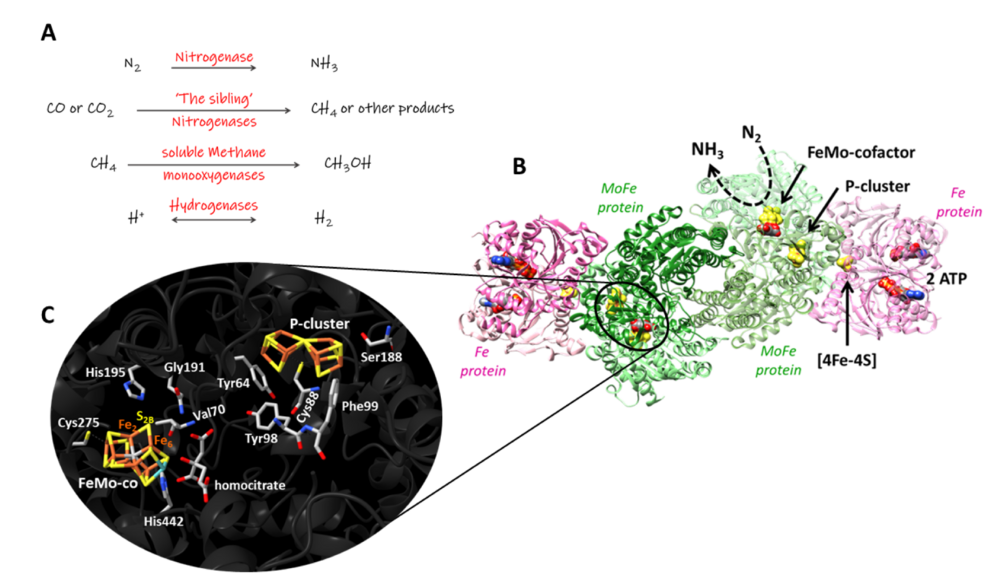
Figure 1. A) Examples of several chemical reactions and the respective metalloenzymes involved in performing them that our group is interested in. B) Crystal structure of (PDB id:4WZA) Mo Nitrogenase (Mo N2ase) from Azotobacter vinelandii, one of our proteins of interest. C) The two metal clusters and some of the important residues involved in the catalysis in Mo N2ase.
Almost every metalloenzyme, in addition to the catalytic active site, involves additional metal clusters/sites which act as structural sites or are involved in electron/substrate transfers to the active site. Some examples of the additional sites are the 4Fe-4S clusters in Hydrogenases or the unique 8Fe-7S cluster, known as the P-cluster, in N2ases (Figure 1B, C) in addition to the catalytic site (FeMo-co, Figure 1B, C). Moreover, metalloenzymes are often assisted by other metalloproteins for electron transfers and substrate (and co-substrate) diffusions. Our group recognizes the importance of these additional sites/metalloproteins and aims to study them for better understanding of biological catalysis.
A major limitation in studying many metalloenzymes is many times the lack of efficient/suitable heterologous expression systems for their purification. Additionally, their purification from native organisms is not only complicated and time taking but is also of low yield. This especially affects spectroscopic investigations such as X-ray based techniques because it can be very sample intensive. In collaboration with Dr. Decamps group, our group is developing and optimizing recombinant expression systems of metalloenzymes, particularly sMMO, in order to have better yields. sMMO or soluble Methane Monooxygenase (Figure 2) is a metalloenzyme which activates O2 and inserts one atom into an unactivated C–H bond of methane to yield methanol (CH3OH). Our biochemical approaches will be key for enabling advanced spectroscopic studies within our group and more broadly within the Department of Inorganic Spectroscopy, which should ultimately shed light on the key catalytic intermediates in these important energy converting enzymes.
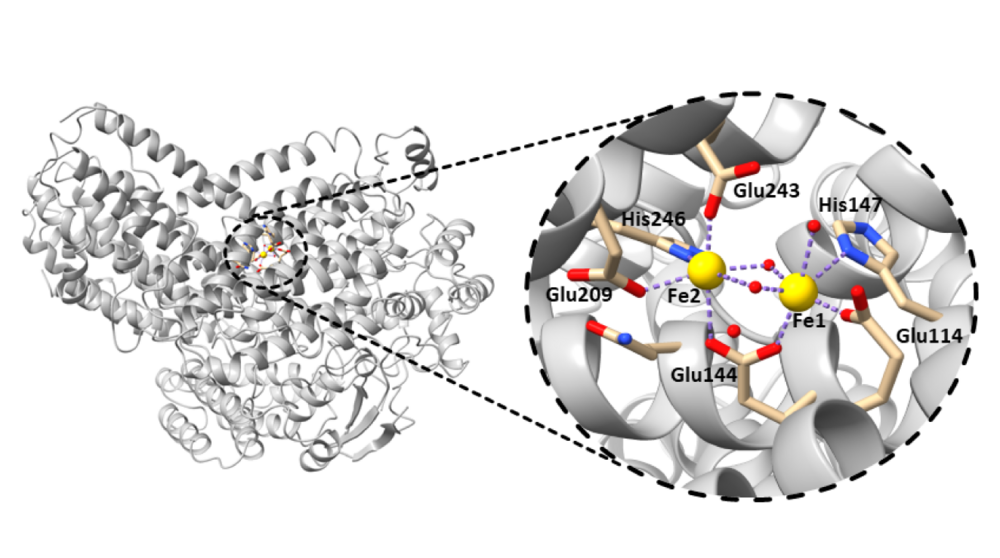
Figure 2. Crystal structure of the hydroxylase component of methane monooxygenase from Methylosinus trichosporium OB3b (PDB id: 1MHZ); the enlarged view of the diiron active site (right).
Open Positions
The “Metalloenzyme Mechanistic Explorations” (MeME) team is always looking for highly motivated and dedicated Bachelor, Master or PhD students and Postdoctoral researchers who are interested and would love to work with proteins and inorganic spectroscopy. If you wish to join the team, please contact Dr. Kushal Sengupta with your CV and cover letter.

